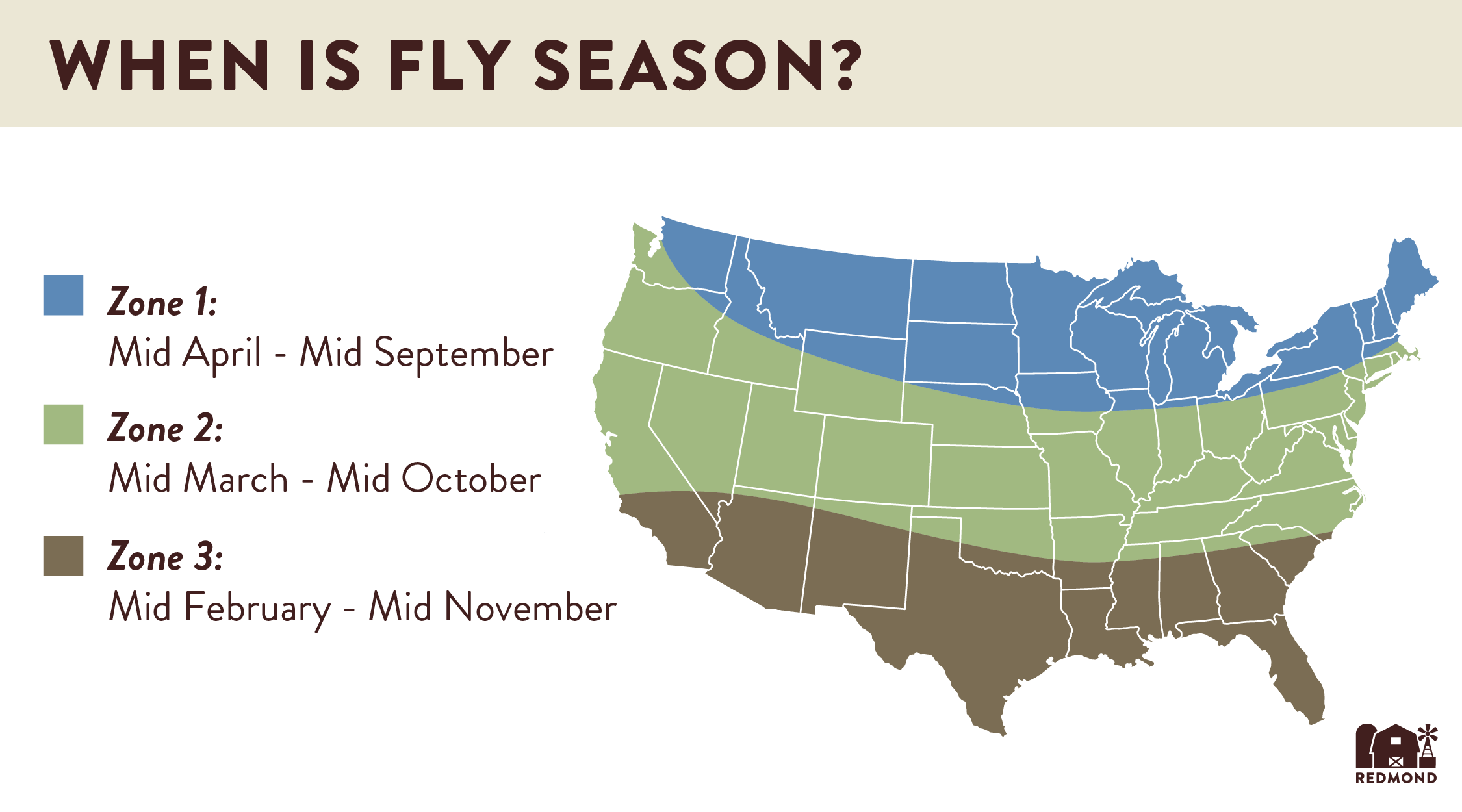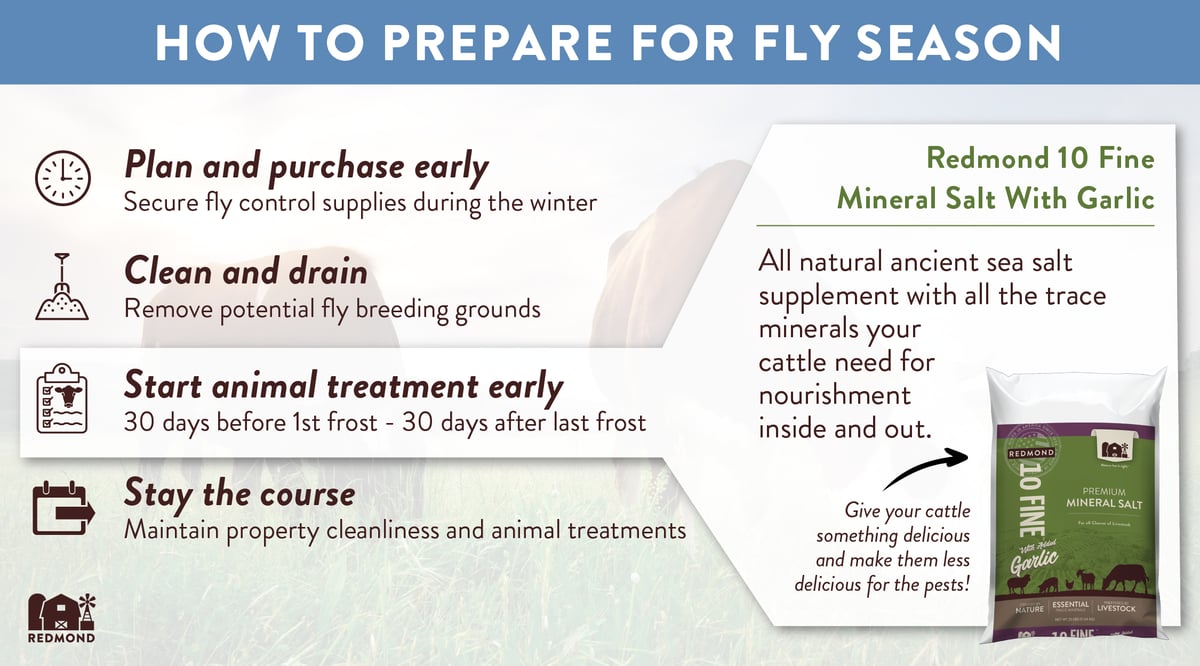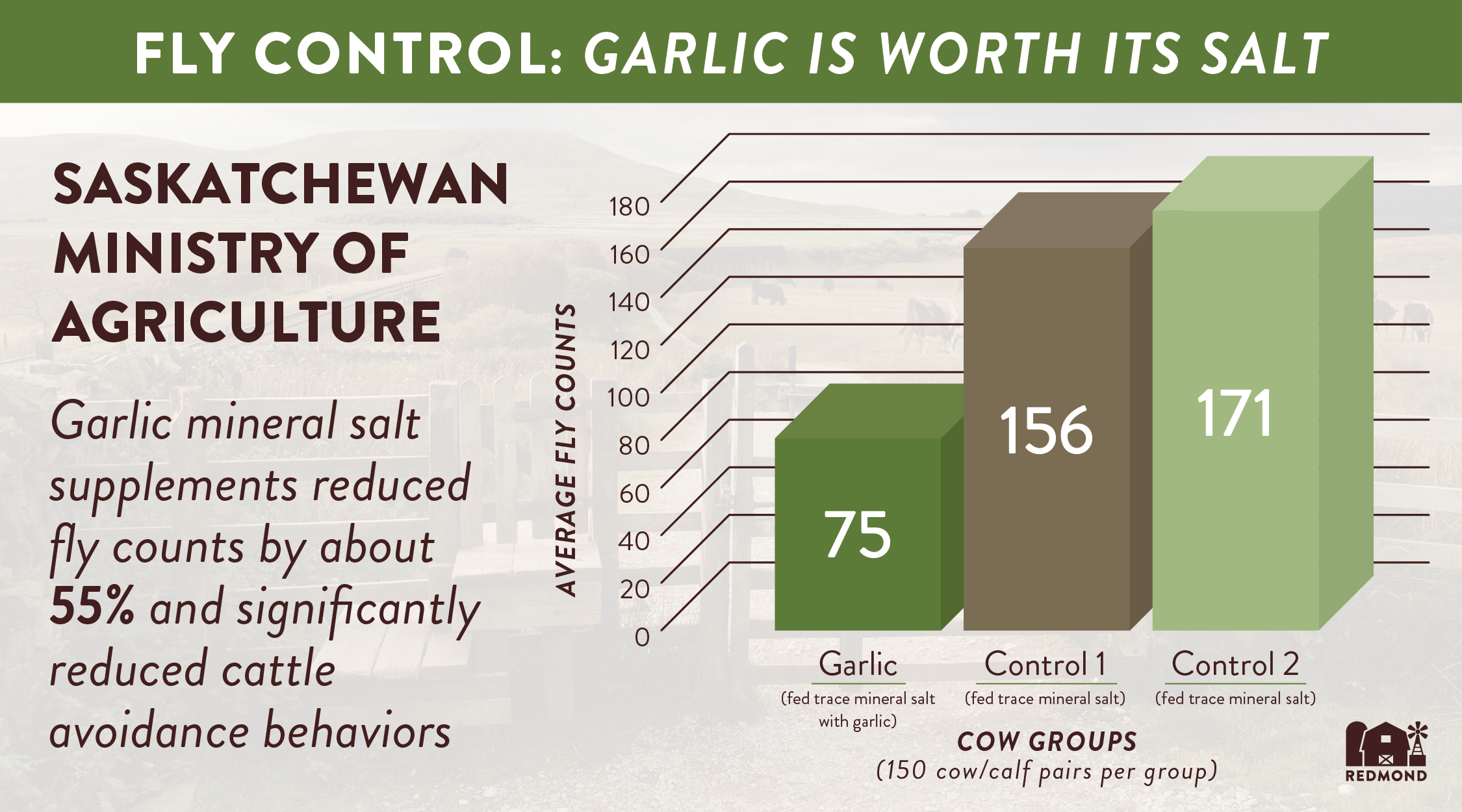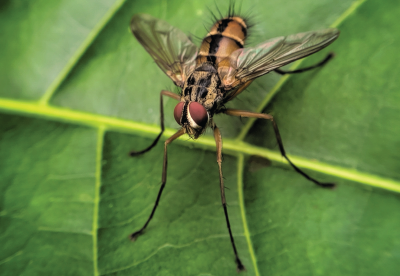When Does Fly Season Start?
Flies don’t care that your calendar says spring starts 3 weeks into March. They will start to surface, feed, and breed when it feels warm and comfortable enough for them to do so. The following map shows generic zones for fly season across the continental United States.

- Zone 1: Mid April - Mid September
- Zone 2: Mid March - Mid October
- Zone 3: Mid February - Mid November
Be sure to watch your local weather forecasts and if you have had a milder winter than usual, be prepared for flies to show up a little earlier.
Preparing For Fly Season
The expression “an ounce of prevention is worth a pound of cure” is especially true for fly control. The most effective fly prevention targets both your cattle and their environment. Here are some helpful tips to give your operation a head start and reduce fly populations before they get out of control. Remember that some flies can develop a resistance to certain pesticides, so research your purchase decisions carefully.

Plan And Purchase Early
As a general rule of thumb, you should acquire your preferred fly fighting supplies during the winter. Purchasing early will give you the best selection and help you get ready in case you experience an earlier spring than anticipated. Be sure to plan for a bug battle that lasts well into the end of fall.
Clean And Drain
Start by removing potential breeding grounds as soon as possible. According to Beef Magazine, horn and face flies prefer to breed in fresh/undisturbed manure while stable and house flies breed in moist/decaying manure.
- Remove spilled and leftover feed from the winter, especially places where feed has become damp and been stamped in with manure.
- Clean facilities, and grazing areas of excess manure (fresh and old).
- Drain and remove all standing water except for your cattle’s primary drinking source.
- Improve drainage around problem areas (like around water troughs).
Start Animal Treatments Early
Ideally, your cattle should start their fly control treatments around 30 days before the last frost and stop around 30 days after the first frost. This includes both topical and feed through fly control methods. And if you are looking for a treatment that flies will not develop a resistance to, try Redmond’s 10 fine with garlic.
Keep Up The Good Work
After your initial clean and drain, follow a plan to maintain a fly unfriendly environment.
- If you store manure on-site, keep piles in a dry/flat location that is far away from water sources and live animals.
- Cover stored manure with a dark tarp to help bake and kill fly maggots before they can grow. Michigan State University has more helpful manure storage tips.
- After storms, remove standing water from your property as quickly as possible.
All Natural Fly Control With Redmond Minerals
There are a lot of fly control products out there, with a wide range of costs, efficiencies, and time demands. But when it comes to repelling harmful flies, happy cows know that garlic is worth its salt. Consider combining your fly control and mineral program to see that garlic mineral salt is not only a delicious natural alternative to other pest repellants, it really works! Learn more about the Saskatchewan Department of Agriculture’s field test of garlic mineral salt as an effective and natural fly control.

Here at Redmond Agriculture, we offer natural, effective, and perfectly balanced mineral salts that animals love. Our products contain all the naturally occurring trace minerals your cattle need to nourish inside and out. Restore the health and happiness of your herd, release yourself from the time demands and worry of other fly control methods, and give 10 fine with garlic a try. Your cows will love it!
Did you know garlic mineral salt can help horses too? Click to learn more from Redmond Equine about fly prevention for your horses. Give us a call today at  to see how we can help!
to see how we can help!
© 2024 Redmond Minerals Inc.

